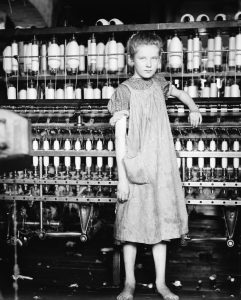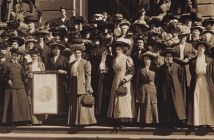
Addie Card, 12, works as a spinner in a North Pownal, VT. cotton mill, circa, 1912. (Photo by Lewis Hine, in public domain).
During the early 20th century, many young children were not sent to school, but were instead sent to work in places such as coal mines and factories.
They, along with people of all ages, worked about 12 hours a day and six days a week, often in dangerous working conditions and at very low wages.
Unions were key to improving these conditions. For nearly a century, union members were among those who fought to shorten the workday and workweek, as well as end child labor. People have fought and died for these advances.
Amid the Great Depression and Franklin D. Roosevelt’s election as U.S. President, labor organizations ramped up their decades-long fight to establish national standards for wages and hours.
On June 25, 1938, Roosevelt signed the Wages and Hours (later the Fair Labor Standards) Act as part of his New Deal initiative. The new law established the eight-hour workday, five-day workweek for most employees and ended most child labor in the United States. Also established under FLSA are the right to a minimum wage and overtime pay standards.
While the FLSA is imperfect, it’s because of this law that most workers have two consecutive days off per week and must be paid at least a minimum wage. In recent years, anti-worker groups have tried to erode these rights, particularly those related to overtime pay.
The FLSA, however, did not apply to some groups of workers, including farmworkers, who were seen as seasonal or contract workers under the law. CSEA is a strong supporter of farmworker rights and have long stood in support of their fight for labor rights. New York State lawmakers recently passed legislation to give these workers more rights, including the right to unionize and overtime pay.


